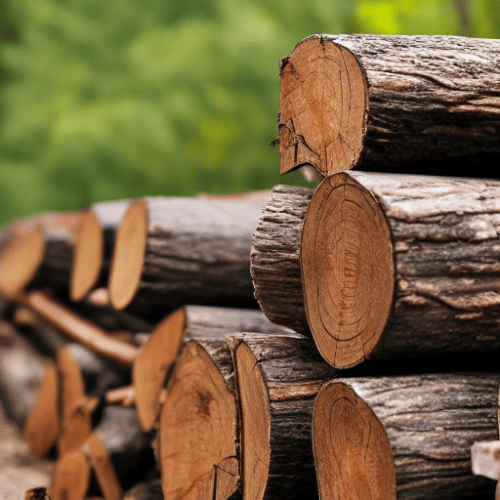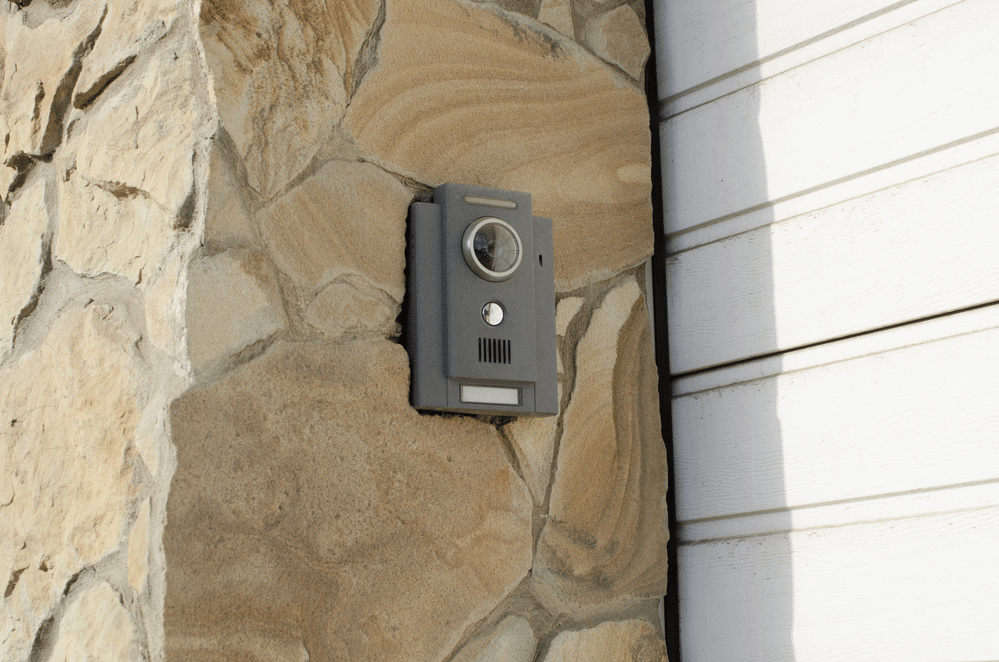Last Updated on
In order to get the most out of your log splitter, it makes sense to have a better understanding of exactly how to use it.
Log splitters are an excellent tool, but you should follow several essential steps to get the most out of the machine. So, let’s work through those steps of how to use a log splitter to help you along the way.
Step by Step Guide on Using a Log Splitter
Step 1: Remember Your Safety Guidelines
We need to start by reminding you of the need to wear safety goggles and other protective gear. Due to the very real risk of flying debris, you need to wear protective gear to make sure you don’t get hurt.
We aren’t saying you need to protect your ears or anything else, but do wear comfortable clothes, cover your arms, wear gloves, and wear those safety glasses, at an absolute minimum.
However, we would go an extra step. Wear boots to protect your feet, and try to have steel toe caps. That should give you some protection should a piece of the log fall.
Make sure the light is good as well. You want to be able to see everything with ease.
Step 2: Keep Kids Away
For safety reasons, you need to keep children away. It is heavy machinery, and a child getting in the way could lead to a serious injury being inflicted on them. You don’t want this to happen, so keep children out of the way before you go ahead and operate the machine. It goes for pets too, and if they wander around without supervision, it’s best to keep them in the house and out of harm’s way.
Also, it’s best only to be doing this yourself in general. That way, you don’t have to stress about who is standing where and could they possibly end up being hit by some piece of the log flying off.
Step 3: Adjust the Log Splitter to Suit You Physically
Whether using a gas-powered log splitter, a manual log splitter, or an electric log splitter, you need to adjust the log splitter correctly to suit you physically.
Before you start splitting wood, make sure you know how much wood you will be cutting, and set the correct height. You don’t want to be splitting logs and bending over on numerous occasions. These are heavy-duty tasks, so stopping that extra work is essential.
Check the owner’s manual to see how you adjust the log splitter appropriately.
Step 4: Prepare the Work Area
You then have to prepare the area where you will be working. You need lots of space to operate heavy machinery and make sure only one person is in the area. Again, taking the proper safety precautions is advisable, and you should have around three feet of space around where you will be working.
Another thing you want to do is to make sure there’s lots of air circulating. Splitting logs is a dirty process, so having that air is also important.
The log splitter should also always be put on a solid piece of flat ground. But, again, this is from a safety perspective, so don’t have it on any slopes.
Step 5: Secure the Wheels
You have to secure the wheels on log splitters to make sure they don’t roll off anywhere when in use. You can easily use a couple of blocks to stop this from happening, but most log splitters will have brakes installed that will make this harder to happen in the first place.
Step 6: Check the Wood

Logs are never perfect, but you need to inspect the wood before operating a log splitter. If you don’t, then you could run into problems, and it will split irregularly.
You want to try to use logs that will split quite evenly. So, look to avoid logs that are not straight-grained. Having knots in your logs will be inevitable but move on to the next log if there are too many.
This checking of the logs applies no matter if you use gas-powered splitters, manual log splitters, or any other method. It is because the power behind the splitter is always going to struggle depending on the log itself.
Also, another additional tip is only to consider using logs that have been cut squarely. It makes the entire process so much easier.
Step 7: Bringing the Splitter Down to the Wood
Once you are ready to split logs, you want to bring your log splitter down on the mark where the split will occur. It is where your preparation, as well as studying the wood, comes into its own.
Exactly how you split, the wood does depend on the log splitter you own. Check the owner’s manual for whatever brand of log splitter you have, and follow the instructions according to that brand.
For a larger log, you will be using a split wedge to make life easier. That needs to be inserted into the crack that has appeared in the log to allow then you to continue the process. However, there is another crucial step to follow, and it applies to how you use this wedge, but more on that shortly.
Step 8: Dealing With Horizontal and Vertical
Depending on the machine you own, it may be a simple case of changing between a horizontal and a vertical split. If your machine can do this, then it should be a case of the beam part being capable of being locked into place.
Do double-check that this happens. Then, check everything is locked down, or accidents can happen.
Step 9: Making an Adjustment
Whenever you want to split wood with log splitters, there may be times when you need to make some adjustments to how the wood itself is splitting. For example, it can be due to discovering a knot or cracking in the wrong way. Also, this is the point where you may have to insert the wedge to split the log finally.
Stop the log splitter, stop what you are doing in the case of a manual log splitter, and turn the machine off. Then, adjust as you see fit. Insert the wedge at this point, and then carry on dealing with the log.
Step 10: Clearing Up
The final step is clearing up. Move the split logs out of the way to stop them from becoming a trip hazard, and then put your next log onto your log splitter.
Maintenance
Aside from actually using a log splitter, you also need to know how to maintain it. The correct maintenance will mean it splits wood cleanly, while the hydraulic pump that powers the entire device will also work nice and smoothly.
You should clean the log splitter once you are finished. Remove any remnants from the device, and check the hydraulic oil level. If the hydraulic oil level drops, then your log splitter will lose some of its power, and it’s going to struggle to chop wood as effectively as it used to.
Also, check your splitting wedge is clean and ready for use. Pieces of resin from the log can stick on there, as it can with any part of the machine, and you want to get that stuff off before it has the chance to dry.
As an aside, we would also recommend checking over your log splitter thoroughly before use. Make sure the pipes are all in working order and that any locks are still operational. You don’t want to suddenly learn of a fault when you are halfway through splitting a log.
Warnings to Keep in Mind
Finally, just a couple of warnings for you to keep in mind when using this machine properly.
Please never use a gas-powered splitter indoors, and that applies no matter the size of the space. It is due to fumes that are created by the splitter rather than anything else. If you can only work indoors, then an electric log splitter is your best option.
Also, if you are log splitting and realise you need to make some adjustments, don’t do it while still using a log splitter. It may sound unbelievable, but people have been known to try to do this. Remember, trying to split logs can be dangerous, and it can cause serious damage to your body if accidents happen.
We did mention this earlier, but it’s one of the main causes of problems with log splitters, so it’s worth mentioning it again.
Start Using Your Log Splitter
So, that is how to use a log splitter, and as you can see, it’s relatively straightforward. You can take a large log in a few minutes and split it down into something far more manageable for you.
Log splitters are wonderful tools if you need to deal with wood like this regularly. The days of splitting wood using hand methods, and all of that hard physical work, are now behind you, so consider investing in log splitters if you want to make life easier.
Paul is the type of person who never met a problem he couldn’t fix. He can always be found tinkering with something in his house, even if it isn’t broken! His tips and tricks are often shared on our site. He’s the one you call when something breaks because he has been known to improvise fixes for everything from leaky faucets to malfunctioning dryers.



